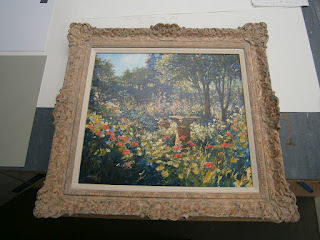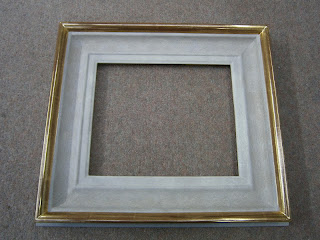Fabric covered mounts can look great, they seem to be very popular in America but for some reason they are not that big over here.
The mounts above are covered in a pongee silk with a gold mount slip.
First I cut the bevel edged mount as usual although the bevel was reversed which is common practice when you intend to add a mount slip (some people call them fillets). The silk was adhered to the face of the mount and the excess was removed from the aperture with just 3/4" of overhang which could be folded round and stuck down at the back. I then put some double sided tape, called fillet tape, on the back of the mount close to the aperture edge. The gold mount slip was cut to size and fixed in place with the double sided tape. The bottom photo shows the mount slip has been covered with aluminium foil tape which protects the artwork from any impurities in the wooden slip.
The mounts above are covered in a pongee silk with a gold mount slip.
First I cut the bevel edged mount as usual although the bevel was reversed which is common practice when you intend to add a mount slip (some people call them fillets). The silk was adhered to the face of the mount and the excess was removed from the aperture with just 3/4" of overhang which could be folded round and stuck down at the back. I then put some double sided tape, called fillet tape, on the back of the mount close to the aperture edge. The gold mount slip was cut to size and fixed in place with the double sided tape. The bottom photo shows the mount slip has been covered with aluminium foil tape which protects the artwork from any impurities in the wooden slip.





















































